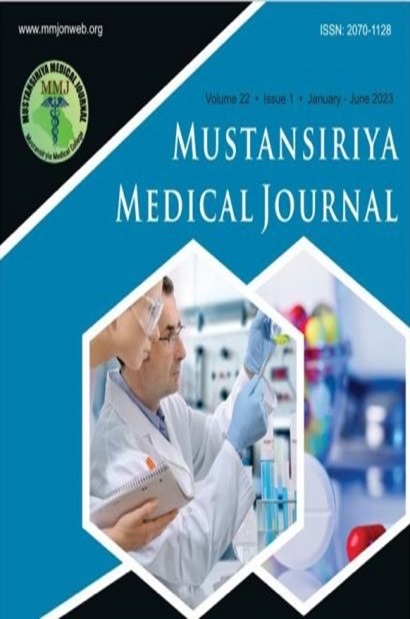Abstract
Aims: To measure the level of Chromium and Vanadium in the serum of
Iraqi children with Type 1 diabetes in an effort to evaluate the status of
these elements.
Patients and Methods: Thirty – five children with type 1 diabetes were
involved in the study. They were all out- patients attending the National
Diabetes Center. Thirty seven non- diabetic apparently healthy children
were included in the study to compare these controls for age and sex
with the diabetics patients. Plasma glucose was measured using PAP –
Enzymatic method. HbA1c was estimated by using non–ion exchange
High Performance Liquid Chromatography. Trace elements including
chromium and vanadium were determined by flameless atomic
absorption.
Results: All diabetics showed a significantly decrease in both element (Cr
and V.) studied as compared with their controls matched for age and
sex. [(17.35 ± 1.81 ng/ml) (18.76 ± 2.9 ng/ml) and (43.47 ± 0.26 ng/ml)
(26.20 ± 0.97 ng/ml) (P< 0.0001)] respectively.
In addition to that, there was a significant positive correlation between
age and both plasma glucose and HbA1c levels for those patients with
type 1 diabetes (r=0.37, 0.33) (p<0.05) respectively, while there was a
significant negative correlation between age and both serum Cr and V
levels (r= 0.45, 0.52) (p<0.05) respectively. Results from controls,
showed a significant positive correlation between both plasma glucose
and HbA1c with serum Cr level (r= 0.39, r= 0.35) (p<0.05) respectively,
while there was a significant negative correlation between age and
serum Cr level (r= 0.40) (p<0.05).
Conclusions: Due to deficiency of these trace elements, supplementation
is indicated to diabetics especially to those with diabetic complications.
Things such as eating a better daily diet, in which elements content is
optimal, is .considered few of the major controllable areas of our lives.
Iraqi children with Type 1 diabetes in an effort to evaluate the status of
these elements.
Patients and Methods: Thirty – five children with type 1 diabetes were
involved in the study. They were all out- patients attending the National
Diabetes Center. Thirty seven non- diabetic apparently healthy children
were included in the study to compare these controls for age and sex
with the diabetics patients. Plasma glucose was measured using PAP –
Enzymatic method. HbA1c was estimated by using non–ion exchange
High Performance Liquid Chromatography. Trace elements including
chromium and vanadium were determined by flameless atomic
absorption.
Results: All diabetics showed a significantly decrease in both element (Cr
and V.) studied as compared with their controls matched for age and
sex. [(17.35 ± 1.81 ng/ml) (18.76 ± 2.9 ng/ml) and (43.47 ± 0.26 ng/ml)
(26.20 ± 0.97 ng/ml) (P< 0.0001)] respectively.
In addition to that, there was a significant positive correlation between
age and both plasma glucose and HbA1c levels for those patients with
type 1 diabetes (r=0.37, 0.33) (p<0.05) respectively, while there was a
significant negative correlation between age and both serum Cr and V
levels (r= 0.45, 0.52) (p<0.05) respectively. Results from controls,
showed a significant positive correlation between both plasma glucose
and HbA1c with serum Cr level (r= 0.39, r= 0.35) (p<0.05) respectively,
while there was a significant negative correlation between age and
serum Cr level (r= 0.40) (p<0.05).
Conclusions: Due to deficiency of these trace elements, supplementation
is indicated to diabetics especially to those with diabetic complications.
Things such as eating a better daily diet, in which elements content is
optimal, is .considered few of the major controllable areas of our lives.
Keywords
Chromium
Vanadium
Insulin dependent diabete
Keywords
-
